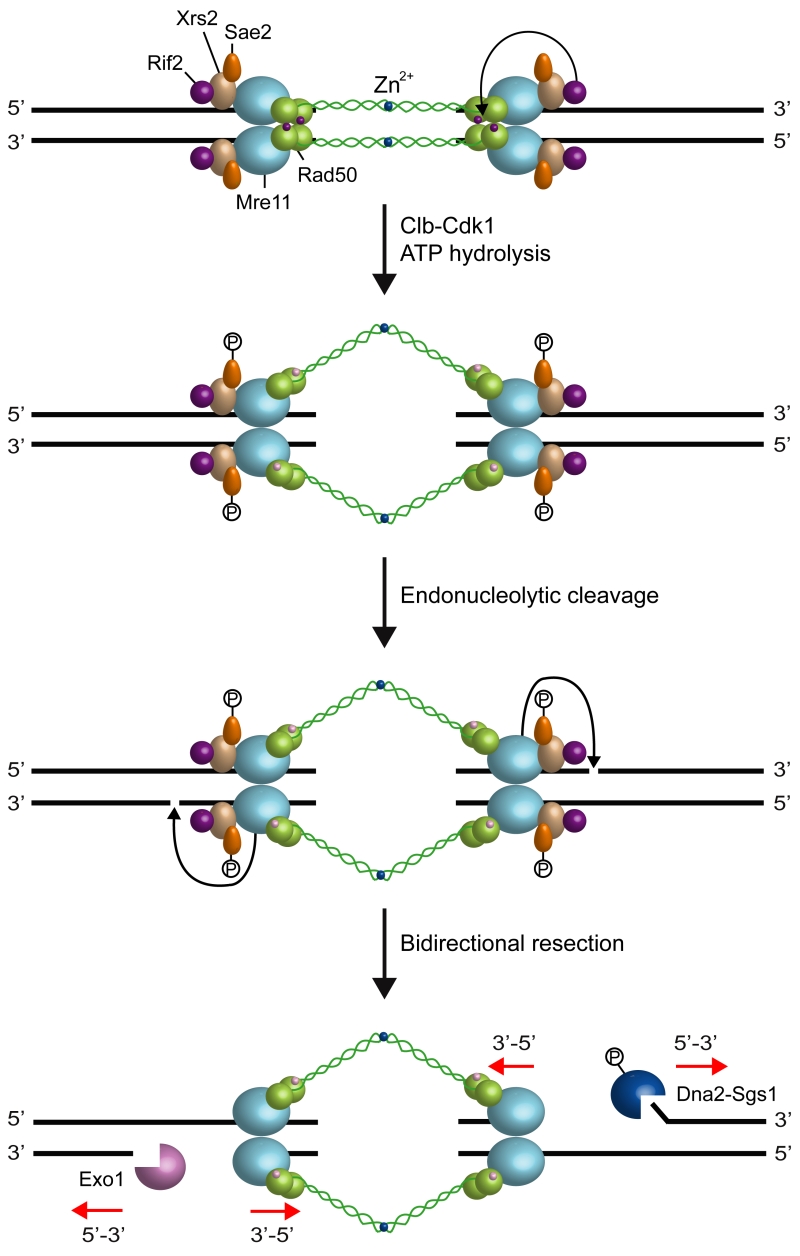FIGURE 2: Model for DSB resection. The MRX complex and Sae2 are recruited to DNA ends. In the ATP-bound state, Rad50 blocks the Mre11 nuclease and MRX promotes DNA tethering. After ATP hydrolysis by Rad50, the Mre11 nuclease sites are exposed and can catalyze an endonucleolytic cleavage of the 5’ strand. Rif2 can promote the ATP hydrolysis activity of Rad50. MRX-mediated incision requires Sae2 phosphorylation by Cdk1-Clb and allows bidirectional processing by Exo1 and Sgs1-Dna2 in the 5’-3’ direction from the nick and by MRX in the 3’ to 5’ direction toward the DSB ends. ATP and ADP are indicated by purple and pink dots, respectively.
By continuing to use the site, you agree to the use of cookies. more information
The cookie settings on this website are set to "allow cookies" to give you the best browsing experience possible. If you continue to use this website without changing your cookie settings or you click "Accept" below then you are consenting to this. Please refer to our "privacy statement" and our "terms of use" for further information.

